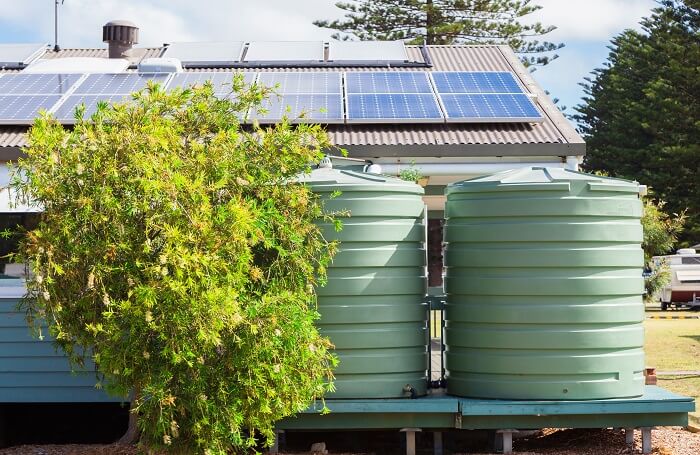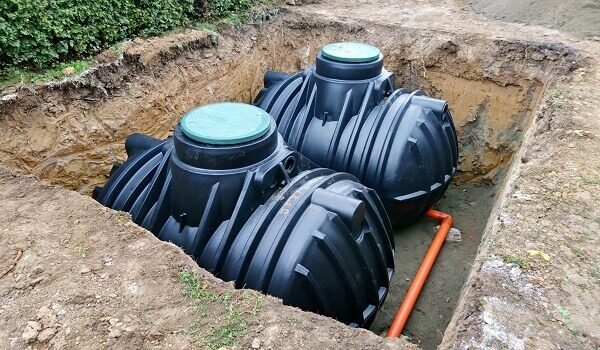
Water storage tanks offer numerous advantages, and putting them on your property is an excellent idea. On the other hand, investing time in researching your alternatives pays off handsomely to ensure that the water tank you purchase can satisfy the unique requirements of your site.
A water tank could help for necessities such as toilet water or if you’d like to keep rainwater clean and ready to drink. The following factors below can assist you in selecting the optimal water storage tank for your rain collection system.
Types Of Water Tanks
Listed below are common types of water tanks. There are some you can find available from The Water Tank Factory and similar water tank sites.
1. Underground

Numerous subsurface water tanks operate flawlessly while occupying the least amount of space. If you live in a rural region without a sewage system, you may be familiar with septic tanks and underground water storage. Of the two types of water tanks, septic tanks are used more frequently to store wastewater.
2. Concrete
Although, in general, water tanks made from either concrete and Ferro-cement, a style of structure that uses reinforced mortar over a mesh of metal, are sturdy and durable, both are relatively large and cumbersome to maneuver.
A 5000G tank would be around 8 tons in weight. While the majority of concrete water tanks are buried, smaller tanks can be erected above ground.
New concrete water tanks frequently emit an odor and may leach lime into the water, which could increase the pH. As a result, these concrete water tanks may require flushing before use.
3. Above Ground
Aboveground water tanks are less expensive and easier to construct. Their maintenance has a host of advantages. Because it is above ground, any damage is easily visible, and fixing it will not require any specialized tools.
An aboveground water tank’s primary downside is its exposure to the elements. As a result, it’s more susceptible to damage from storms or accidents. For those that specialize in maintenance, this type of tank could be a disadvantage—a wide variety of workers could fix a potential repair.
Additionally, ambient temperatures could affect the tank. You’ll need to exercise caution throughout the winter, when temperatures may fall below freezing, and during the summer, when temperatures might soar.
Tanks, by their size, command attention wherever they are located. If you dislike the appearance of massive tanks on your land, you may want to choose a color that blends with their surroundings.
4. Collapsible Tanks
While most tanks are permanent structures, if you need temporary water storage, foldable tanks might be a good alternative. There are a variety of sizes of aboveground water storage tanks. One person can tackle the simple installation and they’re an excellent choice for rural locations.
Pillow tanks are another option for both short- and long-term storage. These tanks are advantageous for transferring large quantities of liquids and cleaning up oil spills.
How To Select The Appropriate Water Tank
Each year, rainwater tanks have the potential to save millions of liters of water. It’s beneficial to the environment, our infrastructure, and wallets regarding water bill payments. Let’s have a look at how to choose the best water tank for your specific requirements.
1. How Much Water You Use And How Much You Require
By determining your water usage and requirements, you can calculate the amount of rainwater you need to capture for daily use.
If you reside in an area served by public water, reviewing your family’s previous water bills may reveal a lot about how much water you consume. Hose meters can also be used to determine the amount of water consumed when performing outside work.
2. Precipitation Averages For Your Location
To determine the amount of rainwater that can be captured, the first step is to decide your usual rainfall. Rainfall data is typically available to download for free on your local weather agency’s website.
Along with monthly and annual averages, any seasonal variation in rainfall must be examined. If, for example, you have a rainy and dry season, you will undoubtedly want to capture more water during the wet season to utilize during the dry season.
3. The Available Space And Location
After determining the optimal rainwater tank size for you and your home, there’s one further consideration to make: the available space for a tank.
Depending on the size of your property and open space, your tank may need to be installed aboveground or underground. You also need to choose whether you want it close to or far from your home and below or above the roofline.
4. Materials To Construct Your Tank
Tanks can be constructed from a variety of materials. Each material is specific for a particular use. Fiberglass, color bond steel, and concrete are all popular choices, depending on the intended function of your tank.
Takeaway
Once you’ve determined your strategy in deciding which rainwater tank is the best for your needs, all that remains is to choose a suitable style and color. Bear in mind there may be rainwater tank rebates you could be eligible for.
Capacity constraints have to be regularly maintained, which could affect your choice of tank. Be sure to do your homework to get the best tank for your needs.










